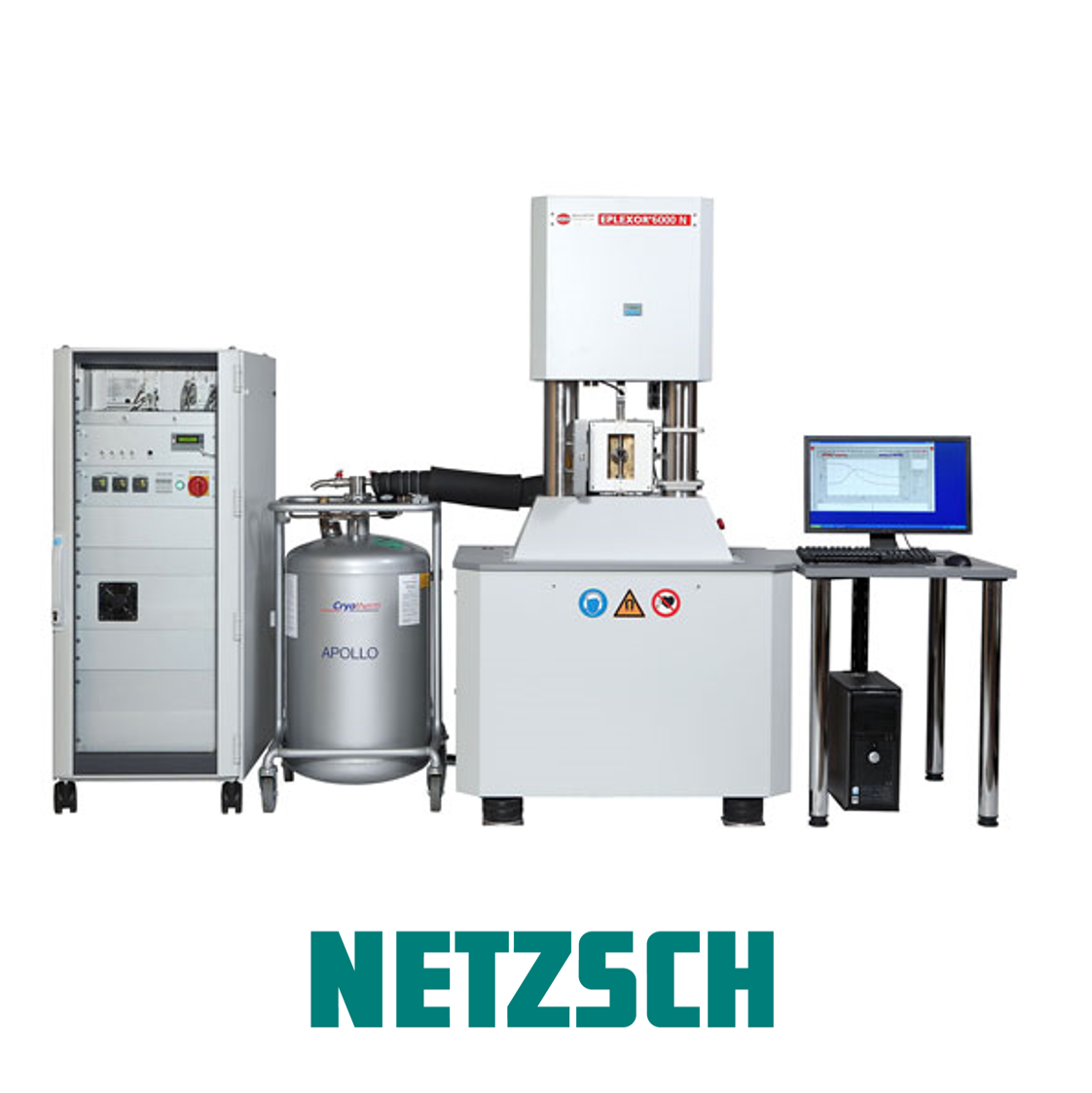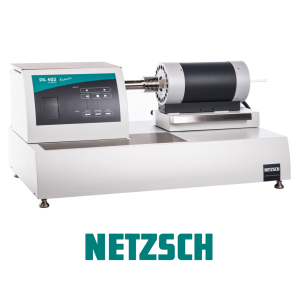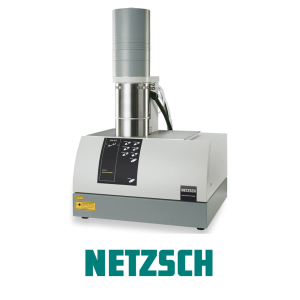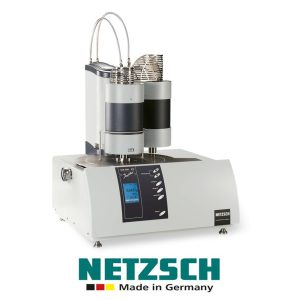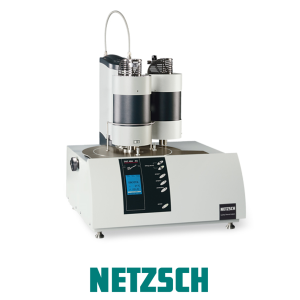תיאור
All testing machines in this series are conform to standards such as DIN 53513, DIN 53533, ISO 6721/1, ISO 6721/4, ISO 6721/5, ISO 6721/6, ISO 4664, ISO 4666/3, ISO 4666/4, ASTM D623, ASTM D4065, and ASTM D4473.
The following ultra-high force DMA/DMTA instruments are available:
| Instrument Type | Max. Static Force | Max. Dynamic Force |
|---|---|---|
| EPLEXOR® 2000N | 2000 N | ± 2000 N |
| EPLEXOR® 4000N | 4000 N | ± 4000 N |
| EPLEXOR® 6000N | 6000 N | ± 6000 N |
Set for the Future
The EPLEXOR® series allows for easy upgrades to the basic instruments with a lot of additional options or accessories. Force and strain sensors can be exchanged.
Unsurpassed Flexibility
With the appropriate hardware and/or software add-ons (which can also be retrofitted), EPLEXOR® DMTAs can be converted into, for example, a Goodrich flexometer (ASTM D623), a 24/7 system with automatic sample changer or an instrument for high-temperature application.
Non-Stop Operation with the Second-to-None NETZSCH GABO Autosampling Systems
By adding one of the two available autosampling systems (ASC – automatic sample changer or MPAS – multi-purpose automatic sample changer), any EPLEXOR® DMTA can be converted to a fully-automatic testing system for up to 160 samples, supporting bending, tension, shear and compression modes. The unrivaled MPAS even facilitates the insertion of sample holders in arbitrary order.
Designed to Investigate Highly Stiff Materials
Based on a separation between the static and the dynamic drive in combination with blade springs, total force levels of up to 16000 N (static + dynamic) can be applied to the sample, enabling optimal conditions for studying metals, ceramics or composites.
Maximum Safety during Fatigue and Tensile Tests
As fatigue or tensile tests at the highest force levels are often destructive experiments, the electrodynamic shaker requires effective shock absorption. This is assured by the unique blade spring system featured in NETZSCH GABO instruments.
Highly Economic LN2 Cooling
Optimized cooling control allows for low liquid nitrogen consumption while working at sub-ambient temperatures.
-
Temperature range:
-150°C to 1500°C (three furnaces)
-
Frequency range:
0.01 to 100 Hz; optional: 0.0001 Hz and 200 Hz; selected frequencies up to 1000 Hz possible
-
Static force range:
2000 N, 4000 N or 6000 N (depending on instrument type; see table)
-
Dynamic force range:
± 2000 N, ± 4000 N, ± 6000 N (depending on instrument type; see table)
-
Force sensor:
interchangeable; nominal forces available up to 12000 N
-
Blade Springs:
for compensating of high static forces and for extending the operation range
-
Static displacement:
Max. 50 mm
-
Dynamic displacement:
up to ± 9 mm (EPLEXOR® 2000N / 4000N) or up to ± 25 mm (EPLEXOR® 6000N); each instrument can be equipped with two strain transducers
-
Additional measuring modes:
creep, relaxation, fatigue, heat build-up, curing, tensile tests
-
Automatic sample length/thickness determination
… in tension, compression and bending geometry
-
Automatic sample changer:
max. 160 samples of the same geometry (ASC), as well for differing sample holder geometries (MPAS)
Software
The technologically sophisticated EPLEXOR® 8 software is a perfect match for the DMTA instrument. The software is based on the Windows™ operating system and offers comprehensive possibilities for data and curve analyses.
Predefined software packages are available in accordance with the selected clamping devices such as tension, compression or bending.
The software features are:
- Frequency sweep (0.01 – 100 Hz; optional 200 Hz; optional 0.0001 Hz; also optional: multi-frequency sweep)
- Time sweep
- Temperature sweep
- Static and dynamic stress or strain sweep
- Temperature and frequency sweep – Isothermal frequency changes (temperature steps)
- Constant stress amplitude mode per ASTM D623 (heat build-up test with static load and dynamic deformation – optional)
- Universal test driven by the servo motor (optional) or by the shaker (optional) –
- Time-temperature superposition – TTS (WLF, Arrhenius, numeric – optional)
- Evaluation of complex modulus (E*, G*), storage modulus (E’, G’), loss modulus (E´´, G´´), damping factor (tand), glass transition temperature, and optional creep, relaxation and retardation, fatigue, energy loss, Payne/Mullins effect analysis and crack growth testing –
- Hysteresis presentation of results (optional)
- Determination of thermal expansion (for tension mode – optional)
- Prediction of the rolling resistance of tires (optional)
Accessories
Sample Holders for a Variety of Applications
Samples of varied geometries and properties require adapted sample holders. To this end, NETZSCH GABO offers a great selection of sample holders and measurement modes including specialties such as a holder for tire cord testing or for curing resins and liquids, respectively.
UV Extension
Initiation of reactions by UV light; for example, UV curing of reactive resin systems
Humidity Generator (HYGROMATOR®)
For carrying out measurements in humid atmospheres or for determining a sample’s water uptake. Technical data for the HYGROMATOR®:
- 5% to 95% relative humidity
- Temperature range between 5°C and 95°C
Immersion Bath
For tension, bending and compression mode; for the investigation of aging or plasticizer effects caused by contact with water or oil.
Goodrich Flexometer Module
Applies a cyclic load to a sample and detects the resulting heat generation during compression (heat build-up).
Cooling Options
Two different types: LN2 cooling (down to -150°C) and air chiller (down to -60°C); intended for use with the standard furnace (-150°C to 500°C).


